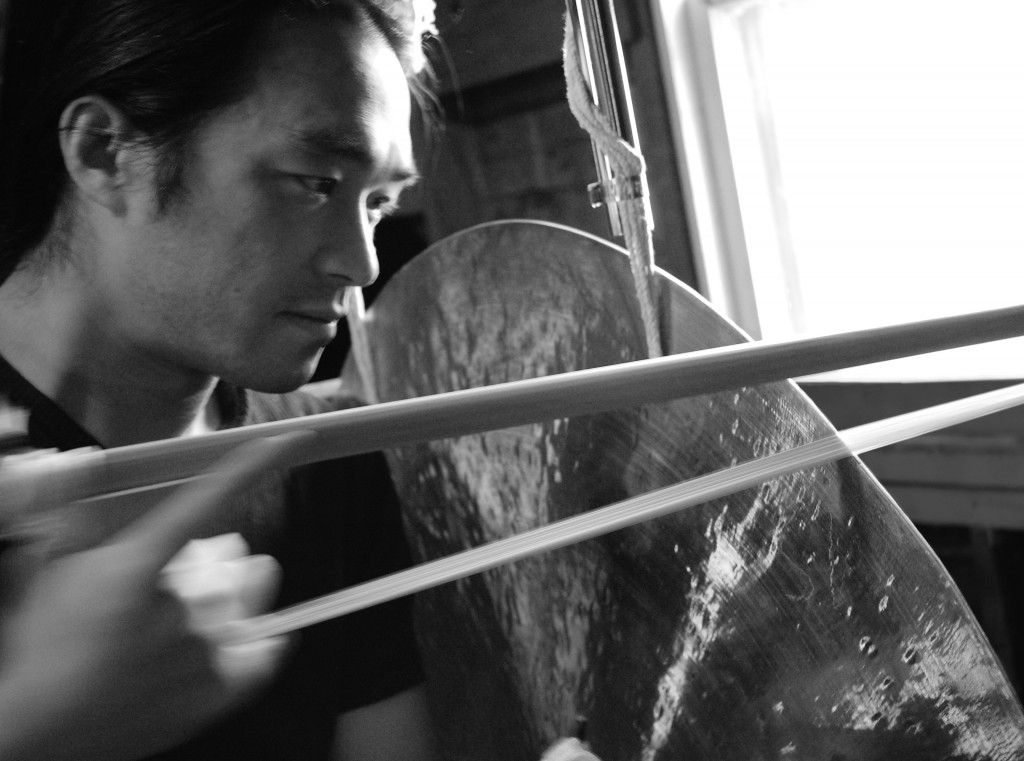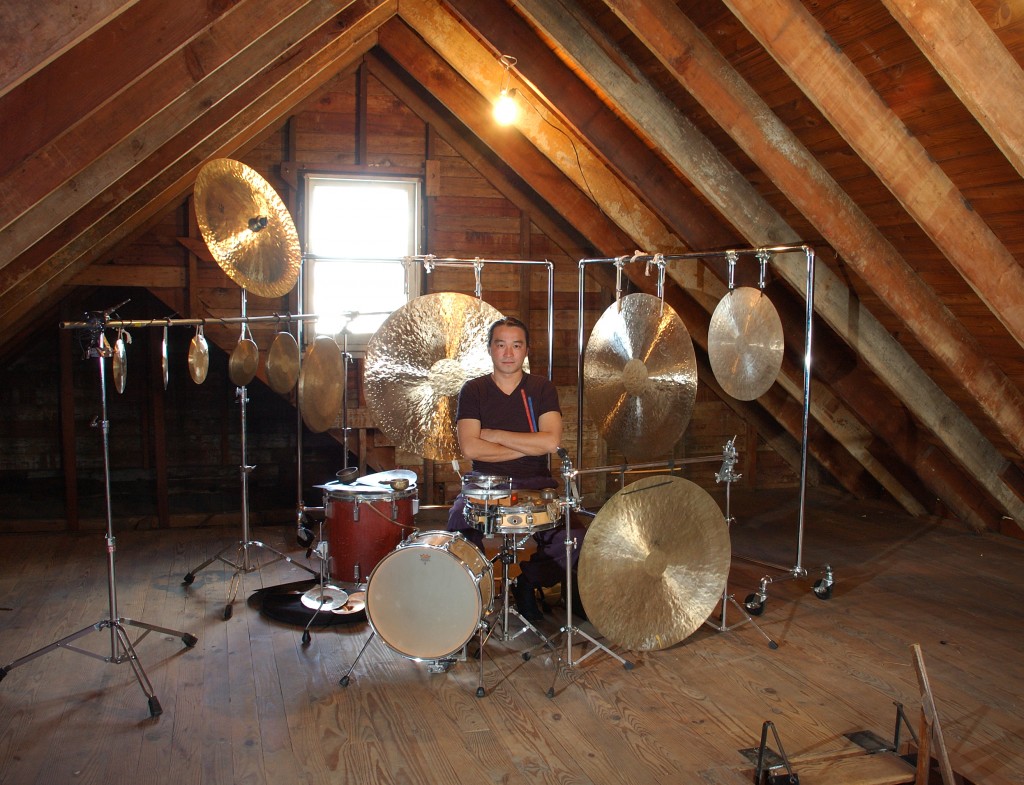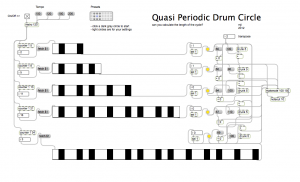We had a really wonderful visit from percussionist Tatsuya Nakatani and artist Julie Schenkelberg. At the end of the seminar Tatsuya generously allowed us to try out his instruments. This was a really inspiring way to end the term and start the Winter/Spring break. Don’t forget Tatsuya will be performing at UrbanGuild on Friday, January 18th.
Tag Archives: percussion
Tatsuya Nakatani @ Lyons Zemi
We’ll be wrapping up the last class of the year with a visit from master percussionist and improvisor Tatsuya Nakatani. Tatsuya is a Kansai native who has been living in the USA and touring the world for just about as long as I’ve been living in Japan (and touring the world.) This should be an exciting event and Tatsuya said we can invite anyone who may be interested. The more the merrier. So invite any of your friends who may enjoy having their ears and minds opened.
- Tatsuya Nakatani, Guest Talk and Performance
- 2013年1月15日(火)2時限目(10:40ー12:10)
- 充光館301
Clicking on either picture will take you to a Facebook page for this event.
NIME Zemi Basic Tools Part II: Max/MSP
While we are on the topic of basic tools for this seminar, I suspect everyone already knows about, or at least has heard of Max/MSP, a multi-media visual programming environment sold by the company Cycling ’74. If you have any intention to do work in the media arts, and I expect that everyone who joins my seminar has such an interest, then you should try to develop some knowledge of P5, mentioned in the previous post, and Max/MSP.
Our faculty does not presently offer any courses in either of these two tools, however there are plenty of ways you can learn about these through self-study. Just as with P5, there are many resources online for learning about Max/MSP, including the built in tutorials and help files. There are also introductory books, and a popular book written in Japanese is 2061: A Max Odyssey. This book dates from 2006, and there have been some changes to Max/MSP in the mean time, however the basic way of working with Max/MSP has not changed and this book is still very useful.
Max/MSP can be even more fun than P5 because it uses a visual programming paradigm: you create a program by connecting little boxes having a dedicated function. The programs are called patches because the links between the objects resemble the electronic patch cables of the old analog sound synthesizers. Here’s what a simple Max/MSP patch looks like:
This is a Max/MSP patch I created after a few hours experimenting with percussion sequences based on the Fibonacci numbers. I’ve titled it ‘Quasi-Periodic Drum Circle’ but it’s not really quasi-periodic because the patterns eventually do repeat and it’s not really a drum circle, because some of the presets use other MIDI instruments such as whistles, and a Cuíca. A more accurate name would be ‘Quasi-Quasi-Periodic Latin Percussion Circle’. This is what a few of the presets sound like:
One of the (many) nice things about the new version of Max/MSP, Max 6, is that it allows you to create standalone applications. If you’d like to try my Percussion Circle as a standalone application on Mac OS X, send me a quick email and I’ll reply with a download link. Because I’ve used several Fibonacci numbers to create the drum patterns, it will take a very long time before the pattern repeats (I’ll leave it as an exercise to calculate just how long it takes.) So this also functions as an ambient generative Latin Percussion app: you can run it as background music if you like that sort of thing.
Like P5, Max/MSP is multi-platform, there are versions for Windows and Mac. Unlike P5, Max/MSP is not free, however it is very reasonably priced and there is a good student discount. Moreover, Cycling ’74 allows you to download Max 6 and try the entire software package for free for one month. Cycling ’74 is an excellent small company to deal with. Members have also showed up at the annual NIME conference from time to time.
You might be wondering where the name Max/MSP comes from. MSP stands for ‘Max Signal Processing’ because MSP handles the audio signals. MSP also stands for the initials of Miller S. Puckette, who first developed Max. Max is named for Max Matthews, who is considered the father of computer music, known for, amongst other things, having programmed the song sung by HAL in the film 2001: A Space Odyssey. Unfortunately Dr. Matthews passed away last year. I have nice memories of meeting him at NIME and other conferences. Here is Max graciously acting as the MC during the first NIME conference concert in 2001.





